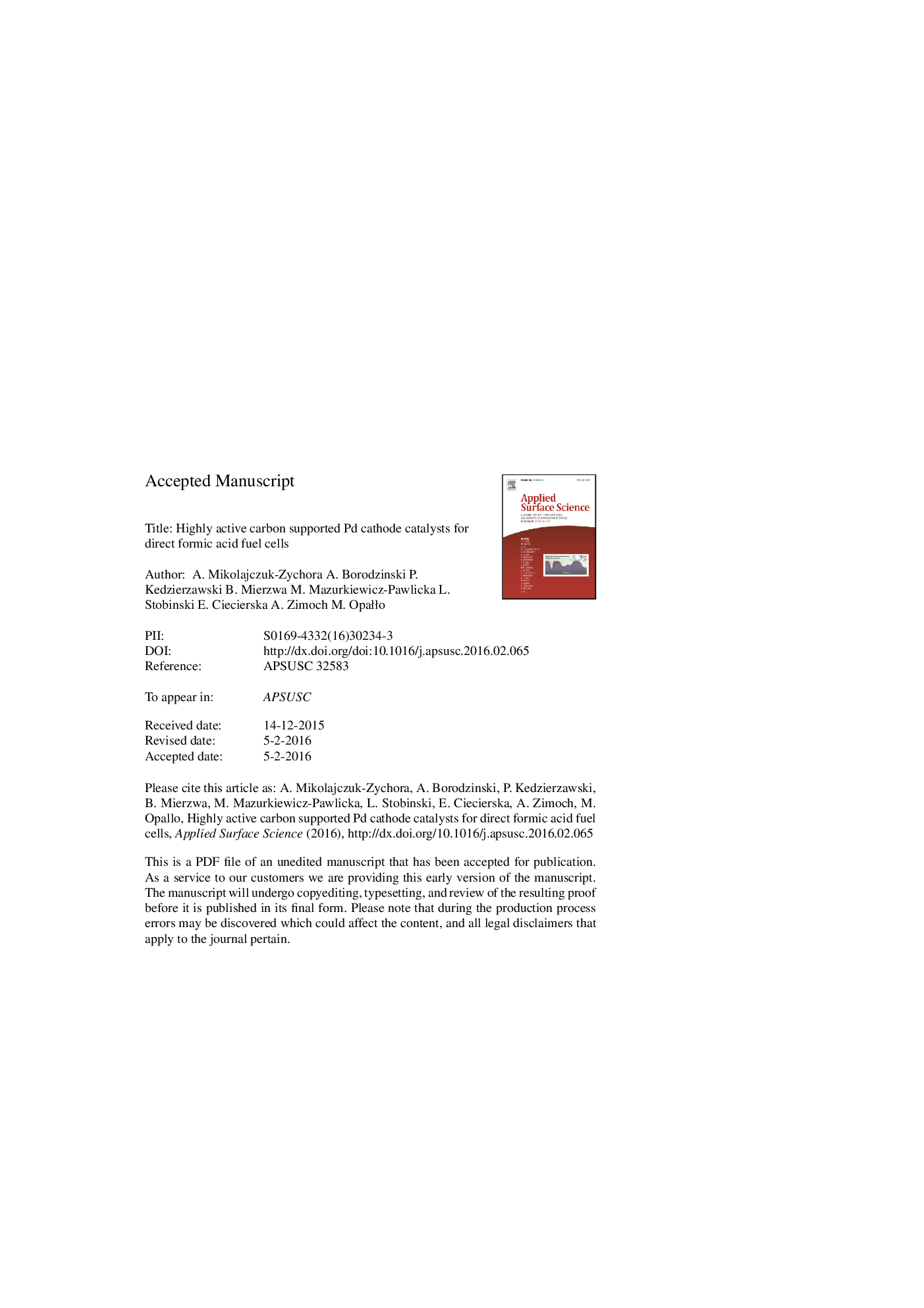| Article ID | Journal | Published Year | Pages | File Type |
|---|---|---|---|---|
| 5353421 | Applied Surface Science | 2016 | 27 Pages |
Abstract
One of the drawbacks of low-temperature fuel cells is high price of platinum-based catalysts used for the electroreduction of oxygen at the cathode of the fuel cell. The aim of this work is to develop the palladium catalyst that will replace commonly used platinum cathode catalysts. A series of palladium catalysts for oxygen reduction reaction (ORR) were prepared and tested on the cathode of Direct Formic Acid Fuel Cell (DFAFC). Palladium nanoparticles were deposited on the carbon black (Vulcan) and on multiwall carbon nanotubes (MWCNTs) surface by reduction of palladium(II) acetate dissolved in ethanol. Hydrazine was used as a reducing agent. The effect of functionalization of the carbon supports on the catalysts physicochemical properties and the ORR catalytic activity on the cathode of DFAFC was studied. The supports were functionalized by treatment in nitric acid for 4 h at 80 °C. The structure of the prepared catalysts has been characterized by thermogravimetric analysis (TGA), X-ray diffraction (XRD), transmission electron microscope (TEM) and cyclic voltammetry (CV). Hydrophilicity of the catalytic layers was determined by measuring contact angles of water droplets. The performance of the prepared catalysts has been compared with that of the commercial 20 wt.% Pt/C (Premetek) catalyst. The maximum power density obtained for the best palladium catalyst, deposited on the surface of functionalized carbon black, is the same as that for the commercial Pt/C (Premetek). Palladium is cheaper than platinum, therefore the developed cathode catalyst is promising for future applications.
Related Topics
Physical Sciences and Engineering
Chemistry
Physical and Theoretical Chemistry
Authors
A. Mikolajczuk-Zychora, A. Borodzinski, P. Kedzierzawski, B. Mierzwa, M. Mazurkiewicz-Pawlicka, L. Stobinski, E. Ciecierska, A. Zimoch, M. OpaÅÅo,
